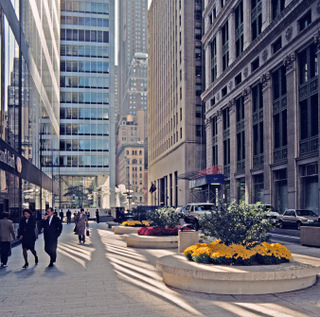New York City routinely permits private property owners to acquire public land without paying for it. Does that shock you? It should! Let me explain how this happened.
In 1961 the Board of Estimate approved a new Zoning Resolution in which the public obtained access to and use of privately-owned open space in exchange for permitting certain owners to build additional floor area inside their building. For four decades people routinely used what became public open space. That changed quite dramatically after foreign terrorists crashed two airplanes into the World Trade Center.
In the aftermath of September 11th property owners began to worry about protecting their buildings from possible terrorist attacks. If they were not worried, their insurance companies were and demanded that they provide protection. In some cases the request for additional security came from the NYC Police Department. In no case, however, could anybody specify the form of that attack. Nor did they devise actions that protected against airplanes penetrating their property. The unspecified attack was expected to come from individuals or vehicles.
Owners began to believe that property protection could be purchased by erecting planters, bollards, and other obstructions to easy access to their buildings. Those obstructions were erected on property, which they had agreed to open to the public in exchange for being permitted to build additional revenue-producing floor area inside their buildings. Thus, without government permission or scrutiny, property owners have reduced and continue to reduce the amount of public space they are required to provide.
Worse yet, property owners are making it increasingly difficult to gain access to public space by taking possession of substantial amounts of public sidewalk (which they do not own) on which they have erected further obstructions in the form of heavy planters and bulky bollards. As a result, when the subways are not in service (as happened during super storm Sandy), it becomes difficult for the increased numbers of pedestrians to pass through supposedly public space quickly and conveniently.
I do not wish to get into an argument over the need to provide building security or the effectiveness of means property owners have chosen to provide that security. My solution is simple. Property owners have appropriated public property for private use. In exchange for taking this property, they should pay rent to the City of New York. The amount of rent should be calculated by determining the amount of floor area this open space permitted them to build (based on the Floor Area Ratio of the zoning district in which the property is located). The payment to the city for that floor area should be equal to the average price per square foot that they are charging in rent to building occupants.
Once private owners have to pay for using public property, I believe they will begin to eliminate planters and bollards that are not needed to provide security to building occupants. More important, the public will either regain the benefit of the open space it paid for by allowing added noise, traffic, and density to city streets and sidewalks or enjoy the cash payments they have earned by allowing private use of public space by building owners.
Alexander Garvin is an Adjunct Professor of Urban Planning and Management at Yale University and is the President & CEO of AGA public Realm Strategists.




I don’t see how your system would work. If owners are providing partial or limited use of a public space, then you can’t charge them the full rental value of the space. Also, the old picture at 140 Broadway appears to show a circular flower bed with seating. Do you see this as an appropriation of public space? Do you have current examples of appropriations that you can share?